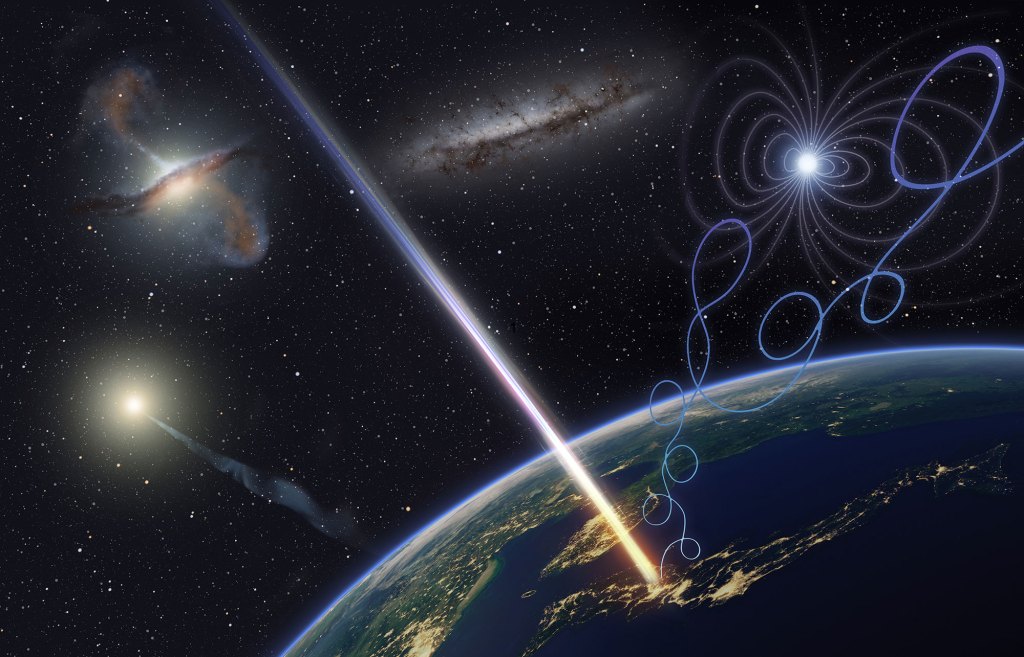Scientists have discovered six galaxies in the early universe that are so incomprehensibly massive that they pose a challenge to our basic understanding of the cosmos, reports a new study.
The primordial galaxies existed just 500 to 700 million years after the Big Bang, yet they have masses that approach 100 billion times that of the Sun, making them almost as hefty as the modern Milky Way.
Videos by VICE
It’s not clear how these galaxies were able to grow into such enormous behemoths over such a short time period, suggesting that our main framework for understanding of the universe, known as the ΛCDM model, may be “incomplete,” according to a study published on Wednesday in Nature.
Ivo Labbé, an astronomer at Swinburne University of Technology in Australia who led the new research, said the discovery of the galaxies was a huge surprise for his team.
“I think I spat out my coffee,” Labbé said in an email to Motherboard. “Most of my colleagues were online all across the globe, glued to the screen, poring over the first images. I think I may have heard a jaw drop here and there.”
“These objects are really extraordinary,” he continued. “One seems to have formed 100 billion solar masses in stars, similar to our present-day Milky Way, in only 5 percent of the time. This was most certainly not expected. We had expected to find 0. In addition, the shapes of these galaxies are really weird. Even though one has the same amount of mass as the Milky Way, it is 30 times smaller. Imagine the Milky Way as an average 160 pound 5’9″ adult: these galaxies are 1-year olds, that weigh just as much and stand just under 3″ inches tall. It’s truly bizarre.”
Labbé and his colleagues discovered the galaxies in observations captured by the James Webb Space Telescope (JWST), the most powerful observatory ever launched into space, which is a collaboration between NASA, the European Space Agency, and the Canadian Space Agency.
JWST, which is the successor to the Hubble Space Telescope, has revolutionized our view of the universe ever since it became operational last year, revealing the earliest galaxies ever seen by humans, among other mind-boggling observations. Now, the sophisticated new observatory has delivered yet another cosmic bombshell by glimpsing these six inexplicable galaxies that existed more than 13 billion years ago.
“Many of us knew that the Hubble Space Telescope was not providing us with the whole story,” Labbé explained. “It can’t. Ultraviolet and visible light from the first stars and galaxies that formed after the Big Bang is stretched out by the expansion of the universe as it travels towards us, so by the time the light reaches us we see it as infrared light.”
“That’s why JWST was built,” he added. “To see where Hubble was blind.”
Even before JWST opened its eyes to the universe, scientists struggled to explain the presence of massive galaxies that existed about one billion years after the Big Bang. Now, Labbé and his colleagues have deepened the mystery by identifying massive galaxies at even higher “redshifts,” a measurement that estimates distances using the expansion of light into longer, redder wavelengths as it travels across huge distances.
The team spotted the galaxies in JWST’s Cosmic Evolution Early Release Science (CEERS) program, which observed a slice of the sky near the Big Dipper. While it’s possible that future observations may show that the galaxies are not quite so massive or so distant, the new study is yet another hint that the ΛCDM model is missing something essential about the formation of these early giants.
“ΛCDM ‘Big Bang’ cosmology is a really well tested theory,” Labbé said. “It makes detailed predictions about how much gas is available to form stars in the universe and when. To form the number of stars in these galaxies you need almost all available gas and convert it into stars at near 100 percent efficiency.”
“Cosmological theory is not going to cave any time soon,” he noted. “Extraordinary claims require extraordinary evidence. There are many steps to go to put these results on more solid footing. Alternative explanations might be that for some of the galaxies the light is not coming from billions of stars, but from gas falling into a supermassive black hole (a “quasar”). That’s exciting too, because the origin of supermassive black holes inside galaxies is yet another unsolved mystery. We’ll find out next year.”
Regardless of how they formed, it’s tantalizing to imagine what worlds might exist inside these compact massive galaxies at the edge of observable space and time—though Labbé warned that they would be extremely inhospitable for life as we know it.
“Aside from the fact that we probably don’t really know what shapes and forms life can take and survive, if we were inside of one of these galaxies we would be doomed,” he explained. “These galaxies are 30 times smaller, so at least 1000x more dense than our Milky Way. That means that nearby supernovas would have probably cooked off the atmosphere and fried us with radiation. There would be planets, and stars that live long enough to host them. But the environment would be downright hostile to life.”
In other words, these ancient galaxies are total death traps, though their mysterious origins could help scientists understand the evolution of modern galaxies, including the Milky Way, which is the only place we know hosts life.
To do that, researchers will have to use spectroscopy to confirm that these galaxies really are as distant as they seem at first glance, and assess whether their light is produced by stars, or something more exotic.
“Personally, I’m really excited about the potential of baby quasars in the galaxies,” Labbé concluded. “This is completely new and impossible to do before JWST. There are so many more discoveries to make. We have barely started!”




